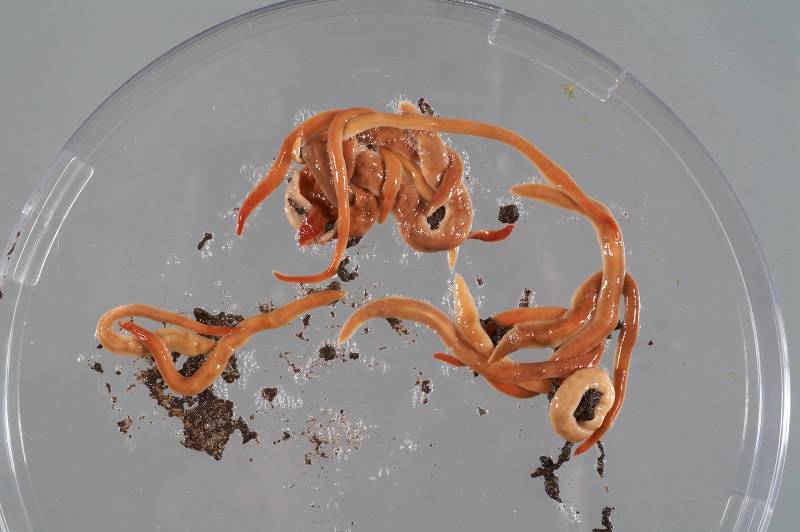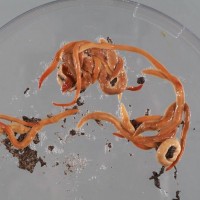
Australian Flatworm - Australoplana sanguinea
Expand and collapse the sections below by clicking on the title or + / - icons.
Short description of Australoplana sanguinea, Australian Flatworm
2-8 cm long, 2-5 mm wide, flattened. Orange with peach-coloured front end or pinkish-orange after feeding. Many minute eyes (black dots) round the anterior and lateral margins.
Impact summary: Australoplana sanguinea, Australian Flatworm
It eats only earthworms and may affect earthworm population structure.
Habitat summary: Australoplana sanguinea, Australian Flatworm
In gardens, garden centres, woodland and other damp sites. Usually found under stones, planks, plastic sacks and other refuges on the soil surface.
Overview table
| Environment | Terrestrial |
|---|---|
| Species status | Non-Native |
| Native range | Australia |
| Functional type | Predator |
| Status in England | Non-Native |
| Status in Scotland | |
| Status in Wales | Non-Native |
| Location of first record | Scilly (1) & Dorset (9) |
| Date of first record | 1980 |
Origin
Native to eastern Australia.
First Record
The first GB specimens were found on Tresco, Isles of Scilly in 1980.
Pathway and Method
Probably introduced with imported plants.
Species Status
Since the initial identification in 1981, it has been found throughout SW England and sporadically further north.
Dispersal Mechanisms
Presumably by human transport of contaminated plants or plant containers.
Reproduction
Apparently reproduces mainly by fission, worms splitting in two, each half regenerating into a complete worm. Sexual reproduction may occasionally occur, over a 10-year study in one infested garden only 3 egg cocoons were seen.
Known Predators/Herbivores
None known for certain, but ground-feeding birds may take them if the flatworms are not under a suitable refuge.
Resistant Stages
None known.
Habitat Occupied in GB
Gardens, garden centres, adjacent land.
Mainly SW England but also sporadically in NW England, Wales. One record in Scotland.
Environmental Impact
Eats only earthworms and can affect the population structure, some earthworm species being more affected than others. Consequent changes to soil structure and fertility have been suggested but there has been no systematic studies of this.
Health and Social Impact
None known.
Economic Impact
None known.
Identification
Ball I.R. & Reynoldson T.B. (1981) British Planarians. Synopses of the British fauna (New Series), No 19. Eds D.M.Kermack & R.S.K.Barnes. Linnean Society of London and The Estuarine and Brackish-Water Sciences Association. Cambridge University Press.
Jones, H.D. (2005) British land flatworms. British Wildlife, 16, 189-194.
Biology, ecology, spread, vectors
Santoro, G. & Jones, H.D. (2001) Comparison of the earthworm population of a garden infested with the Australian land flatworm (Australoplana sanguinea alba) with that of a non-infested garden. Pedobiologia, 45, 313-328.
Jones, H.D., Green, J, Harrison, K & Palin, D.W. (2001) Further monthly records (1994 to 2000) of size and abundance in a population of the "Australian" flatworm, Australoplana sanguinea alba in the U.K. Belgian Journal of Zoology, 131 (Supplement 1), 217-220.
Management and impact
General
Spotted this species?
Distribution map
View the Distribution map for Australian Flatworm, Australoplana sanguinea from NBN Atlas

